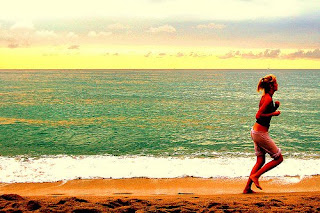 Recently, I recalled practising meditation so I became good at it. What do I mean by good? Well, I wanted to meditate easily, enjoyably, with minimum distraction, being relaxed and still. Oh yeah, I wanted to be less stressed with less anxiety too. That's a lot of wants isn't it? I managed it with a simple practise that I built upon after spending too much time trying other ways.
Recently, I recalled practising meditation so I became good at it. What do I mean by good? Well, I wanted to meditate easily, enjoyably, with minimum distraction, being relaxed and still. Oh yeah, I wanted to be less stressed with less anxiety too. That's a lot of wants isn't it? I managed it with a simple practise that I built upon after spending too much time trying other ways.I can simplify it by saying, 'I learnt to meditate in a relaxed way, to be still on the inside.'
If you like to get to the 'business end' of this article, scroll down to the section titled '1 Minute Meditation Manager'.
Photo: Consensual Media
Meditation is about stillness. To notice more of this, be relaxed.
On my commuter journeys into work I would regularly meditate in the morning. Whether it was crowded like a tin of sardines or as quiet a country road, I found my moment to meditate. As a result I felt 'better' (than those days I didn't meditate) which meant I was happier, less stressed, more focused, breathing more naturally. What became obvious was the increased endurance and flexibility I had in coping with a working day. Often I found I was able to recuperate more quickly and create more positive attitudes towards what I wanted to accomplish for the day.
At first, do a little do it often and make it fun
I became relaxed on the outside and stiller on the inside. Like the obvious benefits of the tastiest nutritious foods, I realised to get the benefits of meditation you can:
Do it often
On a daily basis
In small amounts
Taking time to prepare and enjoy
This makes learning a lot easier and 'user friendly' so let's find your way of doing just this.
A meditation teacher once said "Sitting quietly, noticing more of what's already there, can be fun and relaxing. Who wouldn't want to discover more of themselves?"
On busy, hectic, stressful days when lunches and breaks were minimal or non-existent, I would take a moment to close my eyes and sit peacefully. I would do it often during the day, every one or two hours. There was a time limit at work obviously, so I focused and relaxed and allowed things to be. The more I sat like this, the more natural it became to sit quietly, calmly and afterwards feel tremendously refreshed. I referred to it as my '1 minute meditation manager' and I loved it!
The 1 Minute Meditation Manager
This is a step by step guide to closing your eyes, sitting peacefully for a minute or more every hour (or 2 hours) through your day. Using this approach will give you rapid skills in relaxing more quickly, easily ignoring sights and sounds from your outer environment and enjoying stillness on the inside.
I recommend you reading through the following guide before practising. There's also a hints and tips section below that I think will be helpful. It was (still is) for me. Enjoy!
- Sit comfortably, keep both feet flat on the floor and your hands in your lap. Softly close your eyes.
- Gently focus on the inside as if you are looking from the middle of your forehead.
- Relax your vision and allow yourself to see inside in 'wide screen -panoramic' vision.
- Allow your gaze to be very relaxed. Simply let things be as they are.
- See whatever you see, feel whatever you feel and hear whatever you hear.
- Focus calmly on the inside.
Hints and Tips
Plenty of of preparation leads to perfect performance.
1. Setting your attitude for sitting peacefully and focusing inside is a great preparation for the real thing. Preparation is key.
2. Imagine in sensuous detail, what it will be like to easily sit still and meditate calmly. Use this initially at night and in the morning for preparing yourself to meditating during the day.
3. Decide here and now you'll be finding regular opportunities in your day to meditate. Consider it a fun exploration of what’s possible.
4. Instill an attitude that any distractions will help you return (focus again) to more stillness inside.
5. Allow whatever happens to happen as you sit quietly. Everything has been taken care of. Enjoy the pleasure of being still.
I'd really appreciate to find out what your experiences and insights are.
Do you have any suggestions for helping people meditate? If so feel free to comment.
Thanks for reading.
Jens












